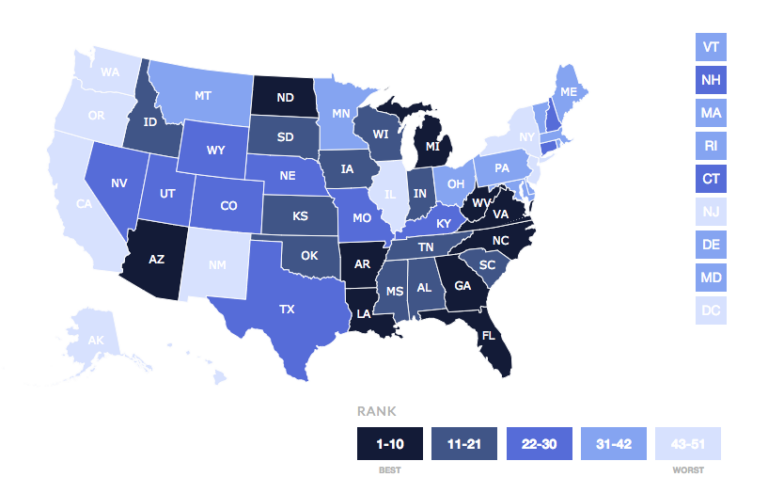By Roland Murphy for Arizona Builder’s Exchange
Arizona’s strength as a leading construction industry market got another boost this week, as it landed in third place among the 50 states and the District of Columbia on the 2018 Merit Shop Scorecard issued by Associated Builders and Contractors.
The scorecard is, “an annual state ranking based on policies and programs that encourage open competition, education and job growth, and award construction contracts based solely on merit, regardless of labor affiliation,” according to the ABC announcement.
Arizona received an “A” grade in six of the scorecard’s seven criteria:
- Project Labor Agreement Mandates
- Prevailing Wage
- Right to Work
- Public-Private Partnerships
- Career & Technical Education
- Job Growth Rate
The state’s only non-“A” grade was a “B” in Workforce Development.
With “A”s across the board, the number one state this year was Florida, up from ninth place last year. The report credited the state’s “free-enterprise and open-competition approach to the construction sector, increased career and technical education opportunities and job growth rates.”
Michigan was the most improved overall, jumping from 24th place last year to a ranking of seventh in 2018.
“States like Florida and Michigan have built an environment that allows merit shop construction contractors to thrive,” said Ben Brubeck, ABC’s VP of regulatory, labor and state affairs. “Prioritizing policies that support small business owners, the American worker and the overall construction sector spurs economic growth, which directly leads to more projects and therefore more construction jobs across the country.”
Arizona Governor Doug Ducey regularly touts the state’s appeal for business development, job creation and construction opportunities, particularly versus neighboring California, a trend reflected in California’s 50th place finish on this year’s scorecard.
“California tumbled from 38th to 50th this year due to a decreased focus on workforce development and careers in technical education, which remains a priority for ABC members and the overall construction sector,” the announcement stated. California received “F” grades in five of the criteria. Its only “A” was in Public-Private Partnerships.
An April 2018 article in Inside Tucson Business, noted, “Between 2007 and 2016, a million more people from California than from other states have moved to Arizona. High housing costs and long commutes, in addition to a recent 12-cent-per-gallon gas tax increase (designed to raise $50B over 10 years for road repair) have proven to be too much for some California residents.”
While laborers — many of whom settle in Arizona — are a major demographic fleeing California for better opportunities, an equally important, and under-reported population migration plaguing California and benefitting Arizona are upper-middle-income residents earning between $100K-$200K. Inside Tucson Business cited a report in the Orange County Register naming this demographic as the largest segment of out-migrants leaving California.
With zero “A”s and highest scores of just “C” in two criteria — Public-Private Partnerships and Career & Technical Education — Illinois was the only state with a worse ranking than California. The report cited issues with labor agreements, wage requirements, hostility toward Right to Work concerns and poor incentives for workforce development.
For the last several years, Arizona leaders have loudly promoted the state as a high-value opportunity zone for innovative firms and industries looking for a friendly state to call home without being unduly burdened by excessive regulation or taxation and with a focus on research, innovation and cooperation between the public, private and educational sectors.
While Arizona was not singled out by name, these types of efforts drew across-the-board praise from in the ABC announcement. “Much of the movement up and down in the rankings was due in part to the level of state policymaker support for workforce development and technical education,” said Brubeck. “With an estimated 500,000 open construction positions in the United States, it is essential that states prioritize workforce policies that recruit, educate and benefit the American worker and fill the skills gap.”
Ranking criteria and definitions for this year’s scorecard are available at meritshopscorecard.org.

